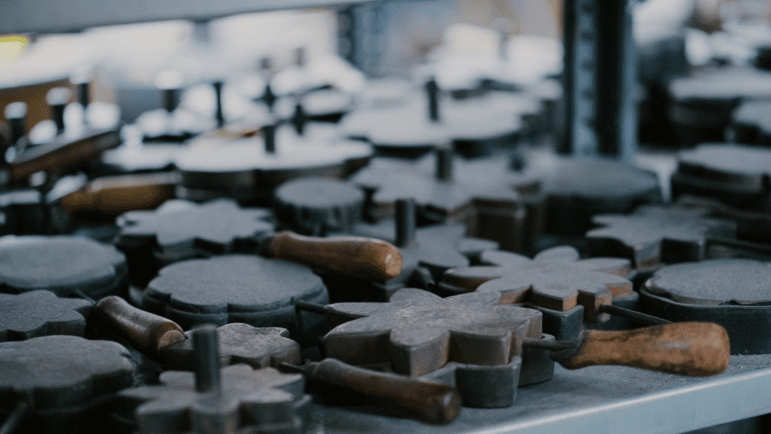If you are a manufacturer of equipment, you likely have product profitability, operating costs, and product quality at the top of your list of things to improve. As a business leader, you are motivated and driven to achieve bottom-line results and increase value to your customers.
One key aspect of Manufacturing Transformation focuses on reducing and eliminating waste in all aspects of operations. Waste has elements that negatively impact the Income Statement and the Balance Sheet. One of your goals as a manufacturer is to eliminate waste wherever possible.
Read on to discover how to drive value to your P&L and Balance Sheet through waste reduction.
Failures/Waste Negatively Impact the Bottom Line
Product failures, of course, are obvious places of waste with high costs. You incur the immediate costs of scrap, re-work, re-inspection, and re-testing. Extended impacts of failures are unplanned machine downtime, product downgrading, on-time performance, and customer satisfaction.
Faulty products that escape and get into the hands of customers also produce negative costs, including processing customer complaints, fulfilling warranty claims, product recalls, loss of repeat orders, and customers.
Where are these Failures and Wastes Hidden?
- Overproduction – minimize producing more than is necessary to meet customer demand.
- Inventory – minimize the quantity of raw materials, components, semi-finished, and finished goods on hand at any time.
- Scrap, Rejects, and Repairs – minimize the time and cost associated with evaluation, disposition, repair and materials, scrap disposal, material handling, storage, expedited shipping, overtime, and non-standard labor
- Motion – minimize the motion and wear and tear on the employees through workplace design, ergonomics, and safety
- Over Processing – minimize processing steps, cycle time, and inventory levels
- Waiting – minimize the downtime of equipment, changeover and set-up time, lack of parts, and synchronization between process steps and processes.
- Transportation – minimize transportation of materials and components on trucks, forklifts, conveyors, and the distance traveled
- Under-Utilized Talent – Right people, right skills, right job assignment
Bottom Line Impacts of Waste Removal Efforts
Waste elimination efforts drive reductions in Cost of Goods Sold and Operating Expenses as a piece of your Manufacturing Transformation efforts.
Income Statement Elements affected:
- Reduces Cost of Goods Sold (COGS)
- Increases Gross Margin
- Reduces Operating Expenses (OE)
- Increases Net Income
- Positive Impact on Profitability Ratios
- Increases Return on Sales
- Increases Return on Investment
Balance Sheet Elements affected:
After processes are improved and stabilized inventory reductions become possible you will see positive impacts on the Activity and Efficiency Ratios:
- Increases Asset Turnover
- Increases Inventory Turnover
- Decreases Inventory on Hand
Reductions of 10%-30% in both Cost of Goods Sold and Operating Expenses are common, with most companies averaging 20% reductions. Consider this example:
- $200M Sales
- $100M Cost of Goods Sold (COGS)
- $90M Operating Expenses (OE)
- $5M Depreciation and Interest
- Return on Sales ratio of 2.5%
- $100M Total Assets
- Asset Turnover Ratio is 2.0
Given a conservative reduction of 10% in both COGS and OE from a Continuous Improvement implementation, the Return on Sales (net income/sales) increases from 2.5% to 12%. Without any balance sheet improvement, the ROI Ratio (Net Income/Total Assets) increases from 5% to 24%.
Large Impact to the Bottom Line
Manufacturing Transformation is not magic, but strategically focused hard work looking at many areas of the manufacturing operations like waste reduction. Eliminating waste can have one of the largest cost impacts in the shortest time and it doesn’t even require putting in new systems or technology. Along with other key activities as part of a complete Manufacturing Transformation project, the operations team can utilize the framework for continual improvement.
Conclusion
Manufacturing Transformation focuses on reducing and eliminating waste in all aspects of operations. Driving successful operations improvement requires both top-down and bottom-up collaboration. To pull it off successfully, the organization must start with an agreed and aligned plan. Most organizations realize that dramatic improvement is necessary and often imperative for survival, especially in the current economic climate. The burning question for the leadership team is always, “Where do we start?”
By the way, if reducing waste and cost is a priority for your business, talk with us about Manufacturing Transformation, our unique service that helps you reduce waste, improve capacity, and globally optimize constraints to achieve your P&L and balance sheet goals. Manufacturing Transformation is a comprehensive offering that reviews your goals, establishes objectives, uncovers opportunities for improvement, designs future state processes and leading-edge IP solutions for transforming your manufacturing operations into an optimized “reaction ready” 4.0 facility. Learn more about Manufacturing Transformation.
Author: Charlie Carpenter, Senior Operational Excellence Consultant


